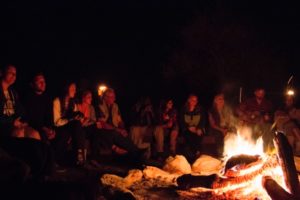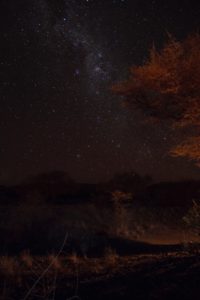Just 10 kilometers outside of Karibib, Namibia, nestled in the bush off D1953, sits Farm Habis; a 5,504 hectare, quaint, country cattle farm, not unlike many mid-20th Century farms in rural United States. What sets Farm Habis apart, however, is its complete self sufficiency.

Farm Habis gets its name from the Damara word meaning “narrow gorge.” The gorge can be seen from atop one of the mountains on Farm Habis.
Farm Habis has been in the Schneider family since the father of Herbert Schneider, DMV, bought it in 1951. Herbert is the father of Bernd Schneider, a well-traveled and knowledgeable tourism specialist who has been with the Texas A&M and Prairie View A&M University students every step of the way since our arrival to Namibia. The Schneiders graciously opened their home to us for three days and two nights as we transitioned from the southern to the northern half of Namibia, and also between professors.
The hospitable Farm Habis is comprised of one main house, a guest house and three small bungalows—all at the main entrance to the farm. Past the last bungalow, down a strip of sandy road, is a campsite fitted with a large spot for a fire surrounded by benches, four outdoor showers and two toilets. This is where we did our intense camping.

Herbert and Ilme joined the Namibia group for a jam session around a campfire hosted by Tobin Redwine, Ph.D. During our stay, the temperature dropped to 1 degree Centigrade.
Herbert, his wife, Ilme, and four farm workers tend 130 head of cattle, 80 sheep and goats, 24 geese and a handful of chickens. The sheep, goats, chickens—and occasionally the geese—are strictly raised for consumption, while cattle are sold for slaughter. The main house, guest house and three small bungalows are equipped with propane-powered stoves and refrigerators, and a braai—an outdoor barbecue pit—which is the main method for cooking lunch and dinner.
The entire farm gets its water from four different boreholes (wells) situated about the property. Water is pumped and stored in one 5,000 L tank and two 2,000 L tanks. These tanks feed household sinks, toilets and showers. To take a hot shower, a fire must be lit under the donkey—Schneiders’ name for the water heaters—to heat the water. The Namibian government buried a waterline on the farm to supply a nearby gold mine with fresh water. Although water does not currently flow through the pipeline, when it does, Habis will have the option to draw from the line, should their boreholes run low.

Dr. Herbert Schneider took the group on a tour of Farm Habis. Some parts of the farm are only accessible with 4×4 vehicles.
Farm Habis receives no electricity from NamPower (Namibia’s national electricity company). Instead, the main house has two 100-watt solar panels and two 12-volt batteries that power small lights throughout the house. The guest house has six solar panels and two-12 volt batteries ;the three bungalows each have one 60-watt solar panel. Just before twilight, petroleum lanterns across the property are lighted to illuminate the houses, bungalows and walkways.

Light from the petroleum lanterns lit the walkway as thousands of stars lit the night sky. The lanterns are the only source of light at night, unless there’s a full moon.
Like most Namibian farms, Farm Habis is isolated from many conveniences in a major city. The nearest hospital is 40 kilometers away in Usakos, and although the Schneiders can purchase most groceries and household necessities at the OK Grocer in Karibib, propane for stoves and refrigerators must be bought 200 kilometers away in Windhoek.
American farmers, ranchers and families living in rural, and especially metropolitan areas, could learn a thing or two from Farm Habis. Instead of shaping the land to fit your needs (i.e. building million-dollar mansions, ponds with exotic fish or other extravagant luxuries that deface the earth), we should live in ways that embrace sustainability — take shorter showers, conserve electricity, and leave nothing behind.